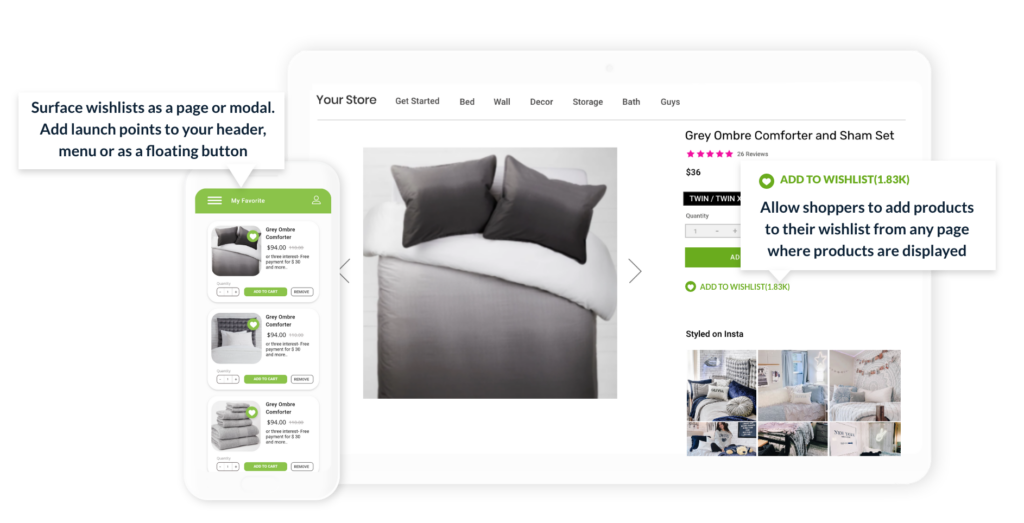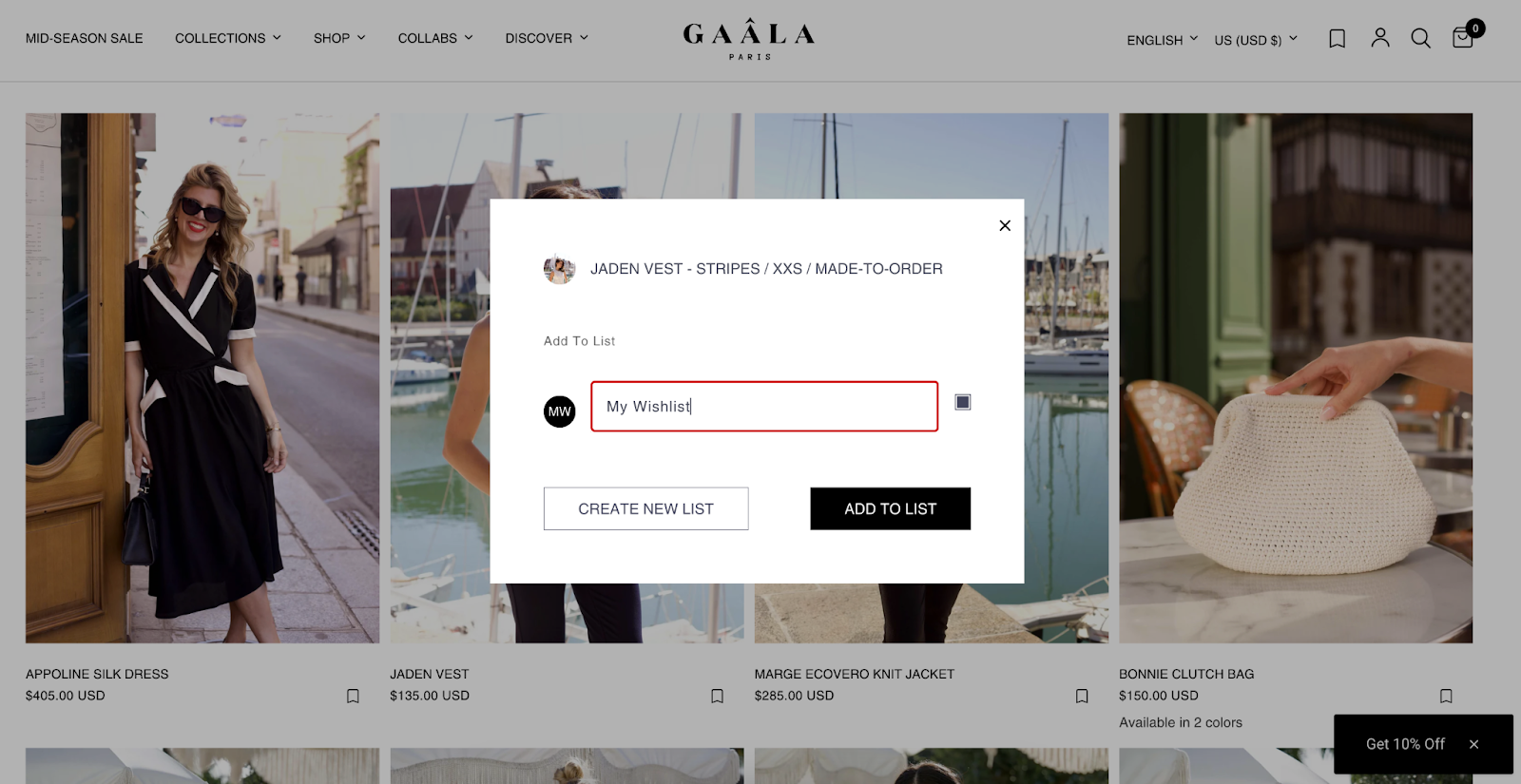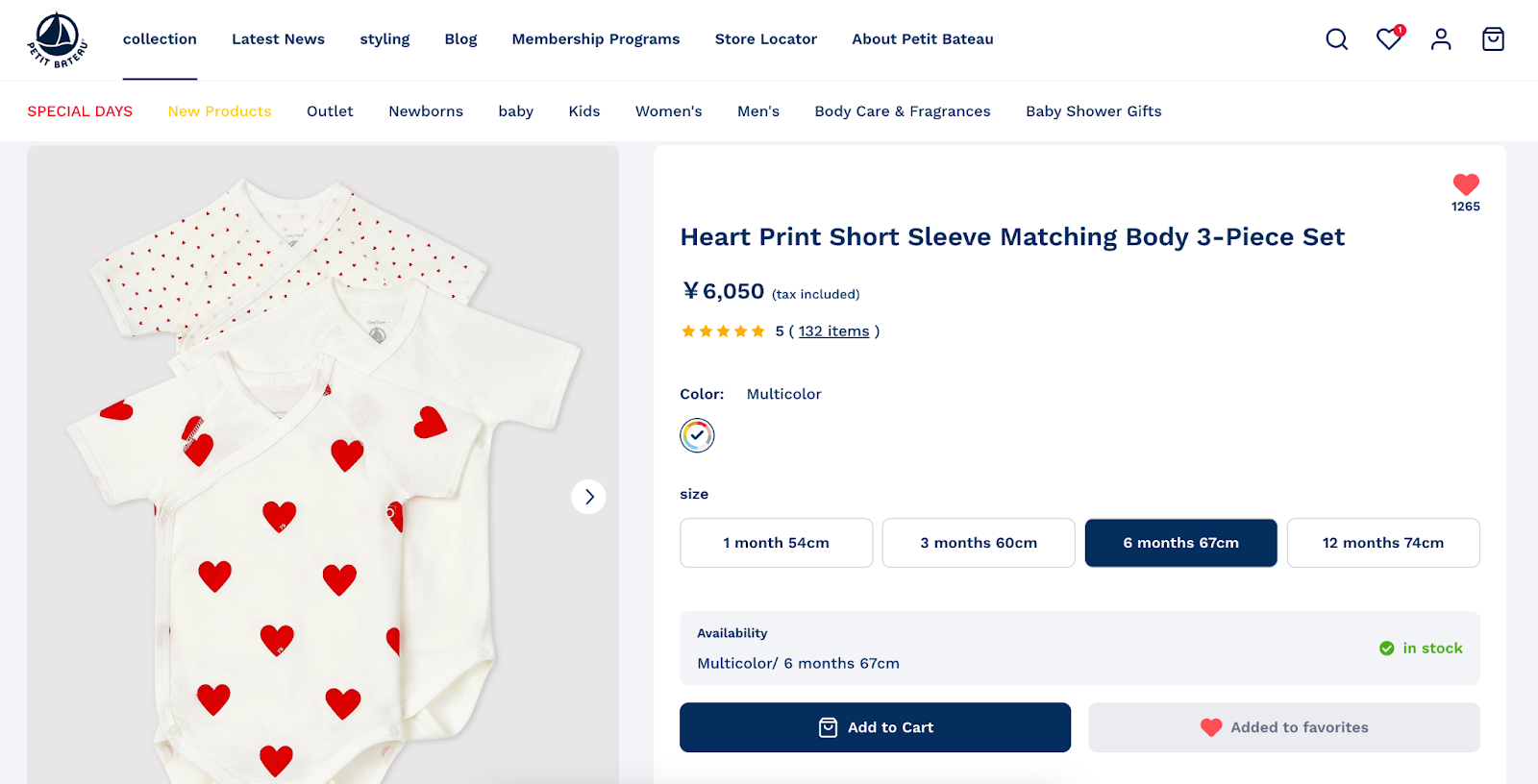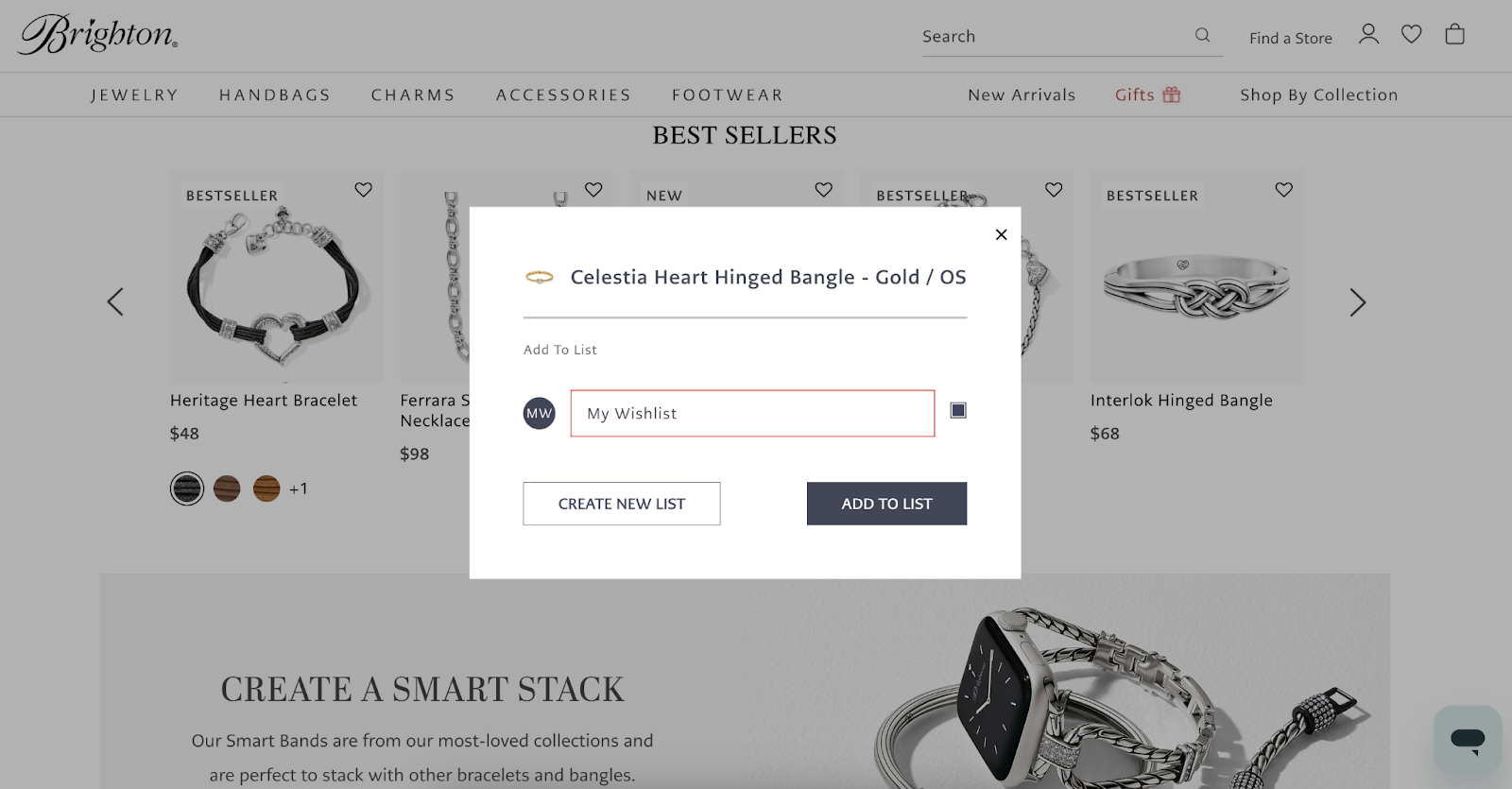Online shoppers today may not like giving away their data, but they love sharing what they like with brands who pay attention. Every ecommerce marketer knows the only strategies still moving the needle in 2025 are customer-led strategies.

Online shoppers today may not like giving away their data, but they love sharing what they like with brands who pay attention. Every ecommerce marketer knows the only strategies still moving the needle in 2025 are customer-led strategies.
It’s time to stop overlooking the one tool that enables both: the wishlist.

Wishlists are easy-to-use tools for your shoppers: They hold a goldmine of insight into customer intent and help increase sales and lower customer acquisition costs.
Sounds too good to be true, right? Well, we’ve got the numbers to back it up. In this post, you’ll find 15 compelling ecommerce statistics that show why wishlists are a must-have if you run an online store.
Data shows three out of every four (75.19%) shoppers spend time adding items to an online shopping cart only to leave without buying. It’s not because they didn’t want the item; they’re just not ready yet. A wishlist tool allows researching shoppers to save items for later without the pressure of an immediate transaction.
What this tells us: If you’re only tracking your shoppers’ cart activity, you’re losing out on most of their intent signals. With a wishlist tool, you can work to lower that very high cart abandonment rate.
Knowing that items in abandoned carts are worth over $18 billion in sales, ecommerce brands need strategies to recover this lost revenue. Wishlists let shoppers leave your site after showing you their preferences, opening up remarketing opportunities you’d otherwise miss. At the same time, a Save for Later feature gets triggered when someone deletes items from their cart, showing pop-up that asks if they would like to save them for later instead. Both work in different ways to nudge shoppers back to complete the purchase.
Why this matters: Strategize beyond the immediate checkout—not all sales need to happen on first interaction, so the focus should be on capturing the ‘not now, but maybe later’ crowd with a well-placed wishlist and/or Save for Later feature.
Cart-based campaign flows rely on one datapoint, while intuitive wishlists let you collect early intent data (before the cart) to trigger personalized campaigns. By tapping into this, GAÂLA was able to boost its revenue by 50%.
Takeaway: A wishlist doesn’t just help you recover carts, it gives you a new channel to drive better results.

According to a global BCG study of over 23,000 customers, younger shoppers (especially Gen Z) want brands to customize their shopping experiences and are happy to share their data for this purpose.
What this tells us: The customer demand is obvious, and if they are willing to exchange their data for personalized value, we should be able to collect and leverage it. Wishlists offer one of the best ways to collect this permission-based data.
The #1 reason shoppers bounce when visiting a website? Netcore data shows it’s irrelevant product recommendations. Even if a shopper has no past purchases or cart additions on your site, they expect you to cater to their taste…and get it right.
Why this matters: A wishlist gives you a real-time understanding of each shopper’s favorites, so you’re not left guessing how to show the right products to the right customer at the right time.
Customer experience is at the core of every successful ecommerce strategy, and in a world of AI-driven experiences, personalization yields customer loyalty like never before. As customer expectations rise, a wishlist with powerful features lets you stay on top.
Takeaway: Tools like Swym’s Wishlist Plus enable you to automate your marketing flows and scale your personalization efforts.
Customers want to shop more, and if you meet their conditions, this Oberlo statistic is proof that you can boost the AOV significantly. The key is to create these ‘right’ conditions, from relevant recommendations to price drop nudges, and influence their behavior.
What this means: Having a robust wishlist in place lets your shoppers become more confident in their purchase decisions, save items they are more likely to buy, and eventually spend more. This is especially important for verticals like fashion and beauty, where shoppers can’t try the product before they buy in the online context and may need to spend more time researching options.
Convenient product discovery is at the top of every shopper’s demands, and a wishlist becomes the perfect place for them to revisit the products they love. Petit Bateau was able to implement this and see a 20% lift in AOV within just a few months.
Why this matters: Wishlists don’t just boost engagement, and when used wisely, they can unlock more confident customers who bring in higher revenue.

Wishlist data helps you pinpoint the products that your shoppers want to buy, and makes suggesting complementary or upgraded products much easier. Effective cross-selling and upselling tactics can then boost your yearly sales by up to 20%, per McKinsey.
Takeaway: The data you collect from wishlists goes beyond understanding intent, and gives you the fuel to power smarter strategies to boost your AOV year-on-year.
Retention is the new acquisition, and the short-term memory that a saved cart enables isn’t enough anymore. Wishlists help e-commerce brands lower customer acquisition costs and retain existing customers to improve both engagement and loyalty.
With acquisition costs on the rise, this statistic is a clear reminder: retention is the new acquisition. Repeat customers buy more, more often, and a saved list of their favorite products ensures your brand stays top-of-mind. Wishlists and back-in-stock alerts are low-hanging fruit for customer retention.
What this means: A saved shopping cart isn’t enough anymore. Wishlist data extends the lifecycle, enabling re-engagement tactics and better ROI on every marketing dollar.
This Gartner study showed 31% of shoppers turning to wishlists for gifting ideas. So, shareable wishlists let you turn your existing customers into micro-influencers, organically bringing sales through both visibility and trust.
Why this matters: A shareable wishlist is a win-win—customers can save and share gift inspiration, and you drive conversions effortlessly.
When customers feel in control of their shopping journey, statistics show that they move seamlessly from browsing to buying.
Takeaway: Customer acquisition is becoming increasingly expensive while attention spans shrink, wishlists are the cheat code to turn intent into loyalty. We’ve even seen wishlist features help produce $13 million in revenue over a year.
The clock starts ticking the moment a new shopper signs up. Personalizing those early touchpoints can help you lower the time-to-conversion, per this study. Zero-party data, like contact information, and first-party data, like browsing patterns, let you stay privacy-compliant while being effective jumping-off points.
What this means: A wishlist-driven welcome flow is the easiest way of leveraging preference data, letting you cut straight to the sale.
We know data is powerful and we collect a ton of it, but it’s only useful if we can turn it into actionable insights. Brighton’s omnichannel presence gave them over 700,000 records of customer preference data, and Swym’s Wishlist Plus data reports turned that data into intuitive wishlists that could be activated across devices.
Why this matters: Wishlist data is a powerful foundation for smarter marketing and a higher LTV.

As data privacy laws for customers create a higher compliance standard globally, having access to first-party data for marketing functions can help brands achieve up to 2.9X revenue uplift and a 1.5X increase in cost savings.
Takeaway: Wishlists are a prime example of how customers happily share signals of their preferences. When really put to work, wishlist data can help you execute marketing campaigns that resonate, convert, and scale.
In a cookieless world, many brands are scrambling to rebuild their marketing strategies. So, whether your wishlists go by ‘Save for Later’, ‘Favorites’, or any other name, they are a great tool to elevate your e-commerce brand with customer-first strategies.
Ready to see why over 40,000 brands trust Swym to implement impactful wishlists?
Check out a free demo of Swym Wishlist Plus and all the features it offers.
Swym Wishlist Plus lets shoppers save products they love, ensuring valuable customer intent is never lost and ready to convert.